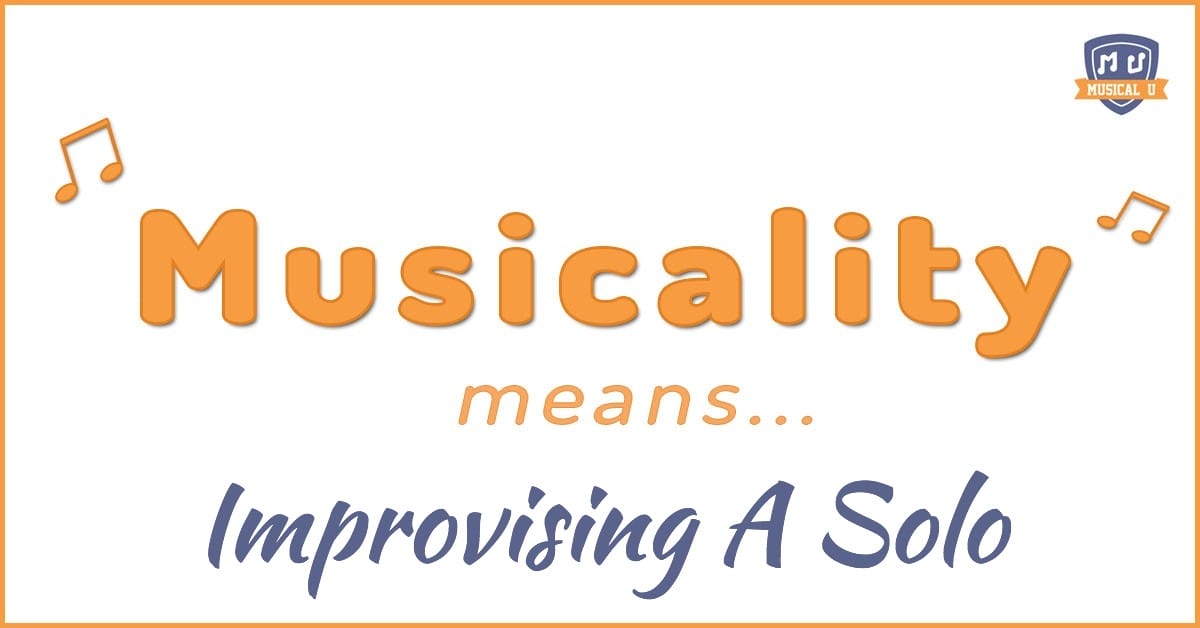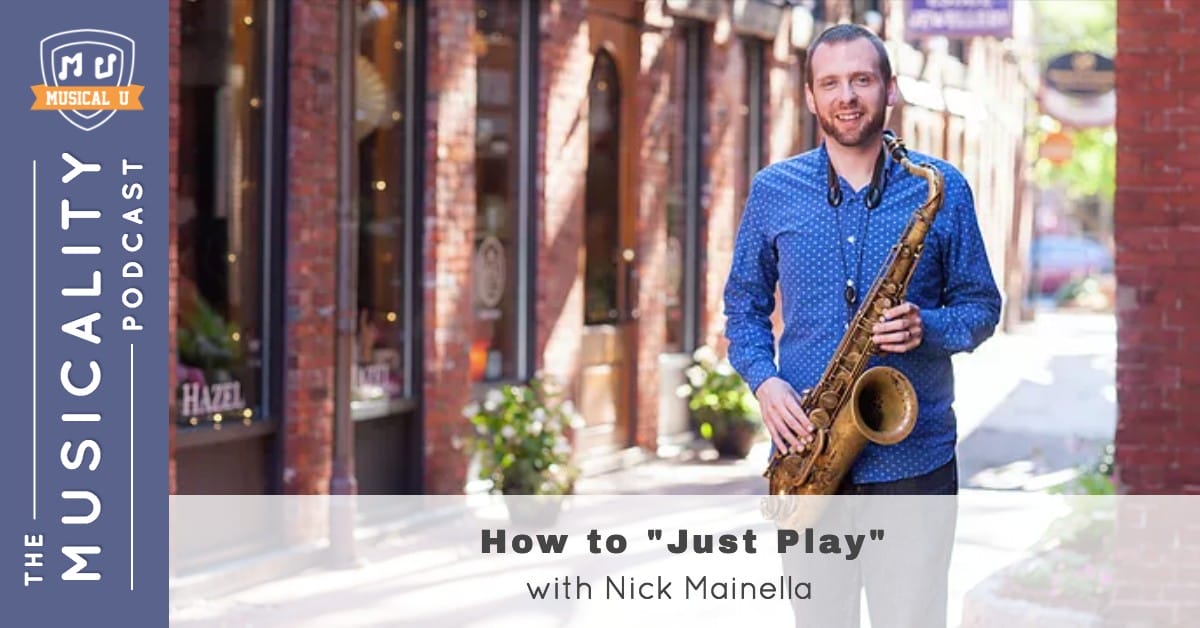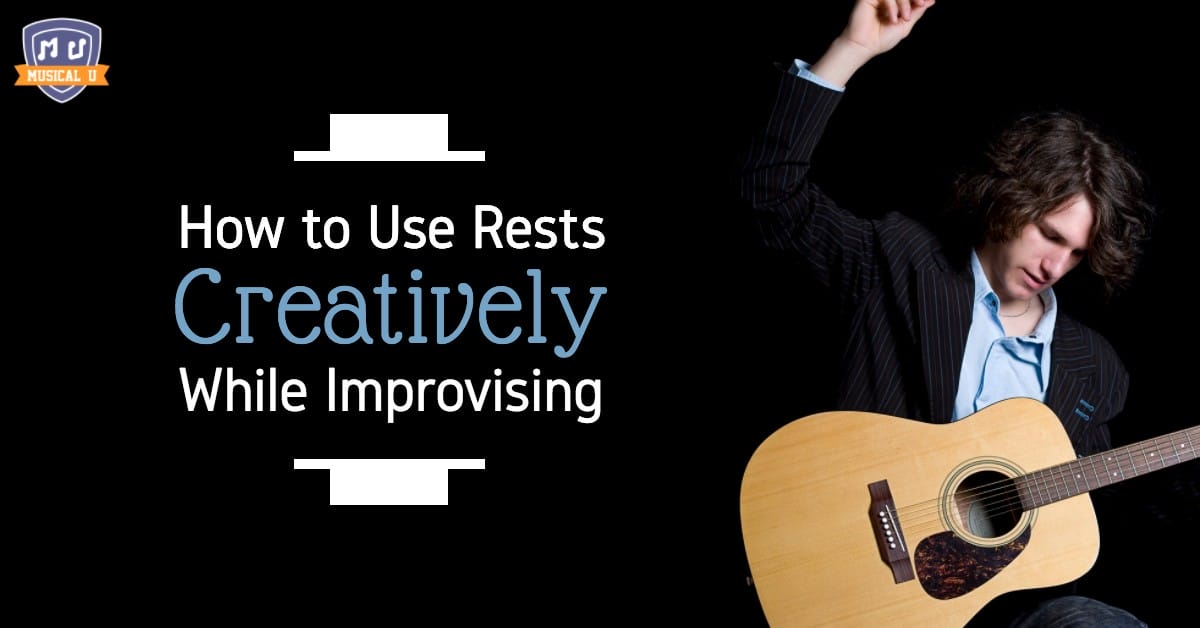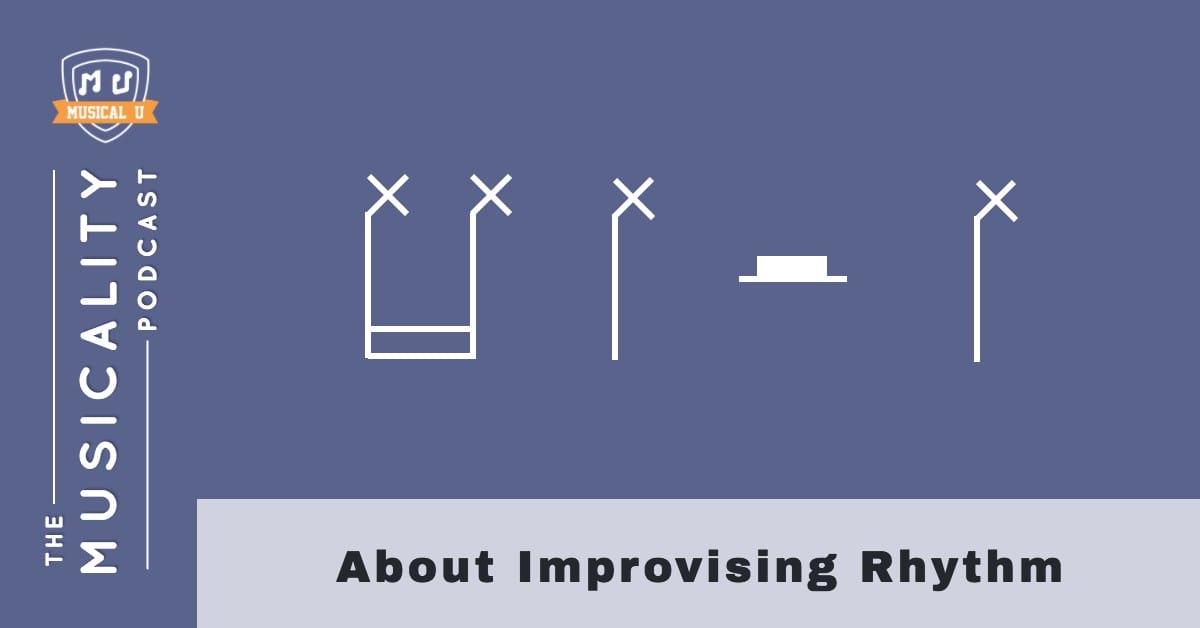It’s official; Improv Month is underway here at Musical U!
March will be jam-packed with new interviews, podcasts, tutorials, and modules all centered around the much-desired skill of musical improvisation.
This week saw four new additions to our arsenal of improv resources: we discuss what it means to improvise a solo, pick a master improviser’s brain for his tips, look at how silence can be used as an effective improvisational tool, and explore the art of improvising with rhythm.
Solo on the Spot
We’re willing to bet you’ve heard your fair share of mind-blowing solos in your lifetime.
It may surprise you to learn that many of them were likely improvised!
 In Musicality Means: Improvising A Solo, we dive into the art of generating a solo on the spot, exploring how it’s done in different genres and on different instruments, the obvious and hidden benefits of adding this skill to your musical toolbox, and how you can start learning today!
In Musicality Means: Improvising A Solo, we dive into the art of generating a solo on the spot, exploring how it’s done in different genres and on different instruments, the obvious and hidden benefits of adding this skill to your musical toolbox, and how you can start learning today!
Improvising a solo is a surefire way to wow an audience and add excitement to your music shows. Artists have been doing this for hundreds of years, and will continue to for hundreds to come. Best of all, this skill doesn’t only apply to melodic instruments – countless incredible drum solos have graced the ears of audiences worldwide. Watch Stephen Taylor demonstrate how he approaches playing a drum solo!
While it may seem that a musician is effortlessly improvising a solo, they are actually using their ear to listen to the music and incorporate their improvised solo into the harmony. Michael Lake from Altobone.com discusses the subject of developing your ears to become better at improvisation. The lesson and practical exercises that he teaches are perfect for helping you get your ear into improv shape.
While we often think of jazz music when talking about improvisation, nearly every genre of music has elements of improv. For the rock and rollers in the audience, Six String Madness has laid out a step-by-step method for beginning improvisers. Going through their recommendations will certainly help you the next time it is your turn to solo in a jam.
Just Improvising
Our first podcast interview episode for Improv Month sees us talking to Nick Mainella, master jazz improviser and host of the 10 Minute Jazz Lesson podcast.
Nick shares the exercises he finds useful for improvising, how he encourages shy students to have a go at improv, and the mindset that is conducive to improvising freely and confidently.
 Don’t sleep on How to “Just Play”, with Nick Mainella, even if you don’t play jazz – the concepts and tips Nick discusses are applicable to every genre and instrument you can imagine!
Don’t sleep on How to “Just Play”, with Nick Mainella, even if you don’t play jazz – the concepts and tips Nick discusses are applicable to every genre and instrument you can imagine!
It was such a pleasure to have Nick on the show and to hear about his musical journey. One thing that really stuck out in our minds was how early he began to take private lessons. While many of us begin in a group music class, he talked about how much there is to gain with one-on-one teaching. Sage Music can help you decide which is right for you.
Can’t find a private teacher near you? No problem! Streaming technologies have progressed so rapidly that online music lessons are easy to find all over the internet. Nick explained some of the big differences when learning online, and how he changes his teaching style to fit with the technology. If you are still wondering if online lessons are right for you, Music Advisor has a handy pros and cons list.
While Nick is known for his jazz expertise, he also teaches the blues. For many, the blues is the easiest place to begin improvising, and Nick encourages his students to begin their journey here. For a crash course in blues for beginners, check out Fire Inside Music’s comprehensive lesson.
Creative Silence
The notes you don’t play are just as important as the ones you do.
The presence of some thoughtfully-placed rests can mean the difference between a pleasant yet boring melody and a powerful, dynamic musical statement.
 Learn how to create the latter with How to Use Rests Creatively When Improvising, in which Learn Guitar Malta’s Robert Callus teaches you how to add interest, rhythm, and suspense to your playing through spontaneous silence.
Learn how to create the latter with How to Use Rests Creatively When Improvising, in which Learn Guitar Malta’s Robert Callus teaches you how to add interest, rhythm, and suspense to your playing through spontaneous silence.
Using rests is a great way to add phrasing into your musical creations by interrupting the lyrical lines. This is true for both improvised and prepared pieces of music! Check out Rob Knopper’s tutorial on adding phrasing to an audition solo.
The famous Impressionist composer Claude Debussy stated that “Music is the space between the notes” when talking about the importance of phrasing. This is just one of the great tips that Scott from String Joy presents on his site – with his tips, your phrasing is sure to take some big steps forward.
While we have been talking about how pauses and rests are important for improvisation, they are also an essential element to composing music. After all, isn’t improvisation just writing music on the fly? The Music Teach talks about this and other secrets of good composing and improvising.
Spontaneous Rhythm
With so much of music being focussed on a melody or a chord progression, rhythm sometimes gets unfairly overlooked.
However, rhythmic improvisation is just as valuable as the melodic sort, and it’s certainly not just for the percussionists out there. In About Improvising Rhythm, we explore the amazing things you can do with only the dimension of rhythm, and how Musical U can get you started in navigating the world of rhythmic improvisation.
 While rhythm is often underappreciated, especially when talking about improvisation, it is the secret ingredient that can help you add interest and connect ideas in your improv solos. Ben Plant Guitar talks about learning rhythmic motifs and applying them to your music.
While rhythm is often underappreciated, especially when talking about improvisation, it is the secret ingredient that can help you add interest and connect ideas in your improv solos. Ben Plant Guitar talks about learning rhythmic motifs and applying them to your music.
A great way to start improvising with rhythm is to take an existing melody and make small changes. Take out a note, add an accent, or change the rhythm. As Steve Treseler explains, learning to improvise with riffs is more engaging and fun than just talking about music theory!
Musicians are great at developing little tricks that help them to remember complex lessons and incorporate them into their playing. Jon Michael Smith is no stranger to this tactic! Watch as he uses something as simple as fruit names to improvise on the guitar. With a little brainstorming, there is no limit to how much this method could help you develop your rhythmic improvisation.
Music, Off the Cuff
We hope this week’s material has given you some new ideas of what constitutes improvisation, and new ways that you can try your hand at this skill – be it through improvising a solo, improvising a rhythm, or improvising with rests.
Stay tuned as we continue Improv Month here at Musical U – more interviews, tutorials, and podcasts soon to come!
The post Solo on the Spot, Just Improvising, Creative Silence, and Spontaneous Rhythm appeared first on Musical U.